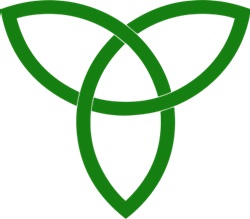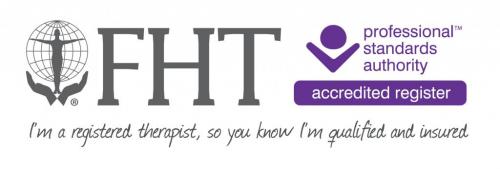As a member of the FHT, it was wonderful to see that the Federation of HolisticTherapists (FHT) have been asked by the widely respected Natural Health Magazine to describe the various complamentary therapies and how to find a good therapist via the FHT register.
'The FHT was delighted to be given the opportunity to support Natural Health magazine’s Complementary Therapies Special – The Ultimate Guide to Natural Healing – in the September issue. The special includes a page devoted to what complementary therapy is, what to look for in a therapist and what to expect from a treatment. It also highlighted the importance of the FHT’s Accredited Register, independently approved by the Professional Standards Authority, and directs readers to search for an FHT member at fht.org.uk/findatherapist'
NATURAL HEALTH
SEPTEMBER 2017 naturalhealthmagazine.co.uk
UK’S TOP ALTERNATIVE WELLBEING MAGAZINE
SEPTEMBER 2017
EXPERT GUIDE
In association with the FHT
What is COMPLEMENTARY THERAPY?
How to find the right therapist and treatment for you
Complementary therapy is a term given to a wide range of different therapies that aim to support or improve a person’s health and sense of wellbeing. Some people use complementary therapies simply to relax and unwind and enjoy a little me time, while others may have treatments as a preventative measure, to help them manage a long-term condition or to get through a particularly challenging life event.
When it comes to which therapies are most popular, body massage and reflexology came out top in a recent survey of the Federation of Holistic Therapists (FHT) members, with half of clients requesting these treatments, followed by aromatherapy, Indian head massage, reiki, healing and sports and remedial massage. Choosing which therapy is right for you will largely come down to personal preference, your individual needs and what benefits you hope to gain from treatment – something a professional therapist will be happy to discuss before you book an appointment.
WHAT TO LOOK FOR IN A THERAPIST
There are many qualities that make a good therapist, but above all else, it is important to choose someone who is appropriately qualified and insured to practise.
The FHT is the largest professional association for complementary, holistic beauty and sports therapists, and to become a member therapists must be appropriately qualified in the therapies they practise; abide by a strict FHT code of conduct and professional practice; be insured to practise; regularly update their knowledge and skills; be accountable for their actions in the event of a complaint.
The FHT also runs an Accredited Register which has been independently approved by the Professional Standards Authority for Health and Social Care. This lists over 10,000 FHT members who offer one or more of the 18 complementary therapies that appear on the register, ranging from massage and reflexology to kinesiology and yoga therapy. By choosing a therapist listed on an accredited register, you have the added assurance that they are part of a government-backed scheme to protect the public.
WHAT TO EXPECT FROM A TREATMENT
As part of your first treatment you will receive a full consultation, during which your therapist will ask a range of questions about your health, diet and lifestyle. This helps the therapist to decide if the therapy you have chosen is right for you or whether any adaptations to the treatment are necessary to meet your particular needs. In some instances, you may be asked to speak to your doctor or midwife before going ahead with treatment, for example if you have a chronic medical condition or are pregnant.
A lot of therapists are multi-disciplined which means they offer a range of different therapies, and if you’re not sure which one to choose, they can help you to decide.
Alternatively, if they feel you might benefit from a therapy or treatment that they don’t offer they may advise you to see another suitably qualified professional.
COMPLEMENTARY, NOT ALTERNATIVE
It is important to note that complementary therapies cannot ‘cure’ a medical condition and should always be used alongside standard medical care, never as an alternative.
Always consult your GP, midwife or other health professional for medical attention and advice and if you are currently receiving care, seek their advice before undertaking any therapy.
To find a therapist you can trust, visit fht.org.uk/findatherapist
In association with the FHT
FIND your FIX
Could the answer to your health prayers lie in these pages? Our experts reveal the best complementary therapies for common ailments
FOR THE MENOPAUSE
Mary Dalgleish, vice president of the FHT (fht.org.uk), recommends:
AROMATHERAPY
Aromatherapy refers to the use of essential oils (made from natural plant extracts) to balance and harmonise the mind and body, and a number of these can be particularly useful during the menopause. Geranium and rose can help to regulate hormones while cypress and peppermint alleviate hot flushes and sweating and clary sage promotes restful sleep. Add four to six drops of your chosen oil to an emulsifier (such as milk or sesame oil) and enjoy in a soothing bath, or vaporise in a diffuser. For headaches and overheating, one or two drops of peppermint oil inhaled from a tissue can provide relief.
REFLEXOLOGY
Reflexology is based on the theory that specific points (reflexes) on the feet, hands, face and ears correspond to different areas of the body, and that working these points helps to restore balance and improve health and wellbeing. This therapy can help to alleviate sleep disturbances, anxiety and other stress-associated problems and can also support the ovaries in regulating oestrogen secretions and the uterus in maintaining its natural health and flexibility. Working with the hypothalamus and pituitary reflexes (found at the centre of the big toe) is good for balancing the endocrine system and relieving various menopausal symptoms, and working on the thyroid and parathyroid glands (located on the fleshy pad just below the big toe) can help to regulate calcium and phosphorous which are important for healthy bones.
NATURAL HEALTH 117
To read more on this article, go to https://blog.fht.org.uk/2017/08/22/fht-board-members-complement-the-ultimate-guide-to-natural-healing/



